University of Southampton
Type of resources
Topics
Keywords
Contact for the resource
Provided by
Years
Formats
Representation types
Update frequencies
-
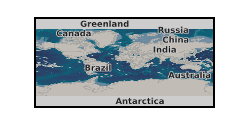
The detection and quantification of an underwater gas release are becoming increasingly important for oceanographic and industrial applications. Whilst the detection of each individual bubble injection events, with commensurate sizing from the natural frequency of the acoustic emission, has been common for decades in laboratory applications, it is impractical to do this when hundreds of bubbles are released simultaneously, as can occur with large methane seeps, or leaks from gas pipelines or undersea facilities for carbon capture and storage. This paper draws on data from two experimental studies and demonstrates the usefulness of passive acoustics to monitor gas leaks of this level. It firstly shows experimental validation tests of a recent model aimed at inverting the acoustic emissions of gas releases in a water tank. Different gas flow rates for two different nozzle types are estimated using this acoustic inversion and compared to measurements from a mass flow meter. The estimates are found to predict accurately volumes of released gas. Secondly, this paper demonstrates the use of this method at sea in the framework of the QICS project (controlled release of CO2 gas). The results in the form of gas flow rate estimates from bubbles are presented. These track, with good agreement, the injected gas and correlate within an order of magnitude with diver measurements. Data also suggest correlation with tidal effects with a decrease of 15.1 kg d-1 gas flow for every 1 m increase in tidal height (equivalent to 5.9 L/min when converted to standard ambient temperature [25 °C] and absolute pressure [100 kPa] conditions, SATP). This is a publication in QICS Special Issue - International Journal of Greenhouse Gas Control, Peter Taylor et. al. Doi:10.1016/j.ijggc.2015.02.008.
-
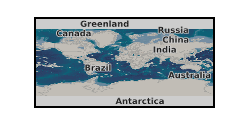
The global carbon cycle - how much carbon is stored in its interconnected reservoirs (ocean, atmosphere, plants and soils on land, sediments in the deep sea) as well as the fluxes between them, is not set in stone. We know from the geological record that the concentration of CO2 in the atmosphere has varied enormously over the last few hundred million years. The chemistry of the oceans also gradually changes with time and the organisms living within it adjust and evolve. As a result, how the carbon cycle 'works', and particularly, how well (or not) atmospheric CO2 (and hence climate) is regulated in the face of disruption, also changes on geological time-scales. This creates challenges to understanding the causes and consequences of past global warming like events and how such events can be related to potential future changes. Sediments slowly accumulating in the deep ocean reflect what goes on around and above them, both chemically and biologically. Of particular interest to us is the mineral calcium carbonate (CaCO3), which can be found in the form of chalk and limestone rocks today. CaCO3 is used by certain marine organisms for constructing shells and skeletons. Hence, the amount of CaCO3 that in buried in sediments tells us something about ancient organisms and ecosystems. In addition, CaCO3 will start dissolving in seawater if the conditions too are acidic or the depth (and thus pressure) too great. How much CaCO3 originally created by organisms at the surface that escapes dissolution in sediments below to be buried and preserved in the geological record can thus tell us something about the chemistry, depth, and when data from many locations is available, the circulation of the ocean in the past. Looking for subtle changes in the composition of ancient mud in the hundreds and hundreds of meters of sediment core recovered from the ocean floor by drill ship would be a little like looking for a needle in a haystack. However, Nature has been kind to us and the transition from white-colored sediments rich in the carbonate shells of dead marine organisms to clays devoid of carbonate is easy to spot. This point represents a fine balance between the amount of shell material being deposited to the sediments and the rate of dissolution of these shells. Hence, this reflects a certain relationship between surface ocean biological processes and deep ocean chemistry and circulation. Any change in these factors will drive sediments rich in CaCO3 or devoid of any trace of carbonate secreting organisms. In this project we will compile the records from many hundreds of different sediment cores that have been recovered since the 1960s. Will identify the 'balance point' in these cores (if one exists) and combine all the confirmation to reconstruct how this balance point has changed in depth and time in the different ocean basins. Because the age of the sediments in some cores extends back to well before the white cliffs of Dover were deposited, we will start our record there. The interpretation of our curve will not be entirely straightforward, because multiple environmental influences all push and pull the balance point in different directions and with different strengths. We will therefore also use a computer model representation of the Earth's climate and oceans, its carbon cycle, ocean chemistry, and the composition of sediments in the deep sea. We will use this model to explore how the different aspects of the global carbon cycle affect the balance point, and by comparing model predictions to our new curve, interpret how the carbon cycling and the sensitivity of atmospheric pCO2 (and hence climate) to being perturbed by massive greenhouse gas release, has changed over the past 150 million years. Hence we will not only be able to answer the question: do we live in a particularly 'lucky' or 'unlucky' time in terms of how sensitive our global environment is burning fossil fuels, but we will know why.
-
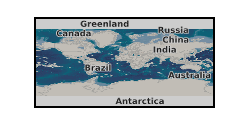
In this urgency proposal we will deploy seismometers for 1 year to record aftershocks from sequence of 4 major earthquakes with magnitudes between 7.1-7.6. These recordings and other recordings of earthquakes from around the globe will allow us to delineate with high accuracy the plate interfaces of the new and old subducting slabs and image the slab structures at depth. The structure of the old and new subduction zones will illuminate the processes occurring at depth which are shifting the force balance in the region to reverse the sense of subduction. The proposed experiment will be enhanced by concurrent studies scheduled to be deployed in Fall of 2014, which includes a multimillion pound ocean bottom seismic deployment by colleagues in Japan. The combined array will allow us to image the Pacific plate which is stalling the subduction, allowing us to investigate what conditions are necessary for a plate to halt the descent of the slab into the mantle. Thus we will be able to understand how subduction stops and starts. Data available online at the Incorporated Research Institutions for Seismology (IRIS) Data Management Centre (DMC).
-

Database of samples taken from the Norham Westmains Farm borehole for isotope, thin section, palynology and fossil analysis. Westmains Farm, Norham, Berwick-upon-Tweed NT 91589 48135. BGS borehole ID NT94NW20.
-

Broadband data collected at the equatorial Mid-Atlantic Ridge from March 2016 to March 2017. From the Grant abstract: We will systematically image the entire length of an oceanic plate, from its birth at the Mid Atlantic Ridge to its oldest formation on the African margin. This is a large-scale focused effort with multiple scales of resolution and sensitivity, from a metre to kilometre scale using seismic and electromagnetic methods. This scale, focus, and interdisciplinary approach will finally determine the processes and properties that make a plate strong and define it. The project will be accomplished through a large, focused international collaboration that involves EU partners (3.5 M euro) and industry (6.4M euro), both already funded.
-

Late (0-250 ka) and middle (1050-1280 ka) Pleistocene boron isotope data from planktic foraminifera (Globigerinoides ruber) and oxygen isotopes data from benthic formainifera (Cibicidoides wuellerstorfi). Boron isotopes measured using multi-collector inductively coupled plasma mass-spectrometry (MC-ICPMS).
-
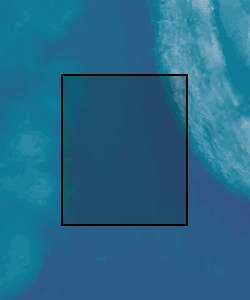
Interpretations of fault positions, geometries and displacements, and seismic stratigraphic horizons. These are provided in the form of Seismic fault and horizon data as ‘Charisma fault sticks’ and ‘Charisma 2D interpretation lines’ ASCII files, respectively, exported from Petrel 2019. Additional CSV and XLSX files containing the compiled coordinate data are included. A readme file is also included explaining the contents of the different files and folders. Interpretations are from seismic profiles of the input oceanic plate section to the North Sumatra subduction zone. Results are published in: Stevens, D.E., McNeill, L.C., Henstock, T.J., Delescluse, M., Chamot-Rooke, N., Bull, J.M., 2020, Intraplate deformation offshore North Sumatra: New Insights from integration of IODP Expedition 362 results with seismic data. EPSL, 538, 116218.
-
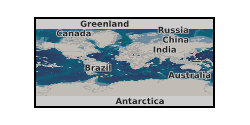
Seawater carbonate system properties and atmospheric carbon dioxide concentration reconstructions from Eocene planktonic foraminifera using boron isotope analyses.
-
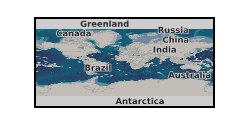
Data produced from NERC Grant NE/L000059/1 - IODP Exp 335 report which is open access and includes all the observations and other data generated on the Expedition. http://publications.iodp.org/proceedings/335/335toc.htm
-

The first dataset consists of the data to accompany the paper 'Modelling acoustic scattering, sound speed, and attenuation in gassy soft marine sediments' by A. Mantouka, H. Dogan, P.R. White and T.G. Leighton. This paper was published as J. Acoust. Soc. Am. 140, 274 (2016); http://dx.doi.org/10.1121/1.4954753. The second dataset consists of the data to accompany an as-yet unpublished study, which will be entitled 'Acoustic wave propagation in gassy porous marine sediments: the rheological and the elastic effects' by H. Dogan, P.R. White and T.G. Leighton.
 BGS Data Catalogue
BGS Data Catalogue